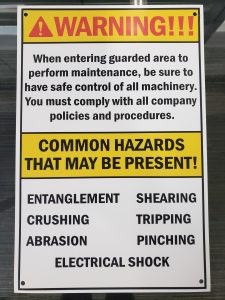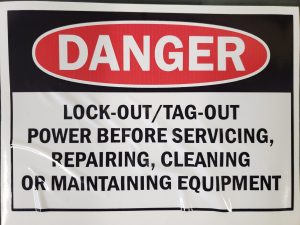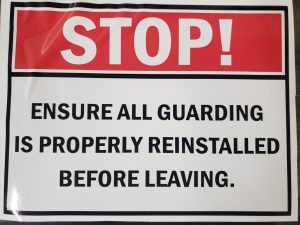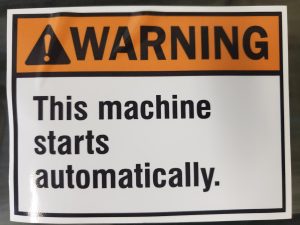Elevators are one of the safest and most reliable methods of transportation. No one knows that better than elevator inspectors and maintenance professionals. It’s their job to make sure lifts are in safe working order.
And thank goodness for them! The National Elevator Industry (NEII) states that, in the US alone, passengers take 18 billion elevator rides each year. With that many trips, keeping elevators safe is of crucial importance, both for riders and workers.
At AVT Beckett, we know just how important it is to keep safety top of mind in the elevator industry. Here are our top tips on what to do and what not to do for elevator safety.
The Safety Code for Elevators and Escalators is the inspection bible in the US. It’s written by the American Society of Mechanical Engineers (ASME) and contains most of the codes that govern elevator equipment. The equivalent in Canada is CAN/CSA-B44-13 Safety Code for Elevators. Some states and provinces have additional codes, but we won’t get into that here.
The ASME states that elevators must be inspected annually, sometimes even monthly, depending on the machine’s age and daily traffic. Of course, during an inspection or routine maintenance, we’re also looking for failure points. Usually, your doors, buttons, and railings get inspected. It’s also very important that the emergency phone connections work, the fire testing log is accurate, and the cabs have their elevator certificates.
During maintenance, workers must interact with three areas of the elevator system. Each area has its own safety codes that must be followed. Below, we’ll cover some of the relevant codes and technology that keep them safe.
Hoistway is the technical term for the elevator shaft. It’s here that the moving parts of the system are exposed, so the health and safety codes are extensive. The ASMEE details regulations relating to hoistways beginning in section 2.1 of the Safety Code for Elevators and Escalators.
Because workers are within the shaft, the railings on the top of the cab are crucial to their safety. These railings must be built to code. Some of these codes include:
At AVT Beckett, we provide completely customizable and durable car top railings to keep the field safe. All our railings are to code, and they’re still the lightest in the industry.
An elevator machine room is where you’ll find the controller, disconnects, and motor. It’s usually on the top floor of a building, in a room that can only be accessed by verified personnel.
You’ll find safety codes for the machine room beginning in section 2.7. There’s also a number of building codes that discuss the types of signage required in machine rooms.
Guards come in two types. There are the fence-style guards that act as cages that must be opened to access the elevator components. There are also component guards that protect your hands from touching moving gears, belts, and pulleys.
For machinery room guards to pass inspection and keep workers safe, they also must meet other safety codes, such as:
We’re proud to have worked with some of the largest buildings in North America to install fully adjustable, pre-engineered global guarding. You can check out our elevator room guards here.
When it comes to elevator cars, maintenance and inspection circle around passenger safety. Workers must make sure ASMEE’s 2.27 codes for emergency operations are satisfied. Plus, it’s important to make sure smoke detectors work and that interior materials are certified to be fire-resistant.
Professionals that interact with elevators during maintenance and inspection should heed the following helpful reminders to ensure maximum safety.
When working in the hoistway or near an elevator shaft, make sure to find secure points to fasten your fall arrest gear. You must tie off when there’s a fall hazard of 1.8 meters or a gap of 30 centimeters.
Proper Personal Protective Equipment (PPE) in these situations consists of a full-body harness that’s been inspected before use. Also, never attach lanyards to a pipe, door, or anywhere else that has not been engineered as a contact point.
Sometimes an expired safety ticket can creep up on you. Before reaching a site, just make sure your crew has the necessary training, such as confined space, working at heights, and the occupational health and safety program.
When working on an elevator, barricade the area and post the required warning signs. Keeping riders informed means they’ll stay out of your way and avoid health and safety risks.
Machine rooms must have signage that clearly labels the moving parts and electrical hazards. AVT Beckett provides the necessary electrical and machine room signage along with our machine guarding.







This is especially important for small buildings with only one elevator. Ask the property manager to notify residents and visitors that the elevator will be out of service and that in the event of an emergency they must use the stairs.
New construction, renovation, and anything in-between — always wear your personal protective equipment (PPE). For elevator installation or maintenance, that means having the following:
While these are the standard minimum requirements when it comes to PPE, you should always follow your company’s protocol and adhere to specific safety measures for your team.
As a leading elevator manufacturer and supplier, we know that when it comes to safety, you can’t cut corners. If you’re looking for elevator accessories and safety components, AVT Beckett can help. Our expert engineers make sure our products meet all the necessary ASMEE and OSHA standards so that you keep your workers safe.